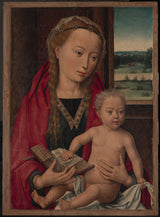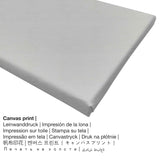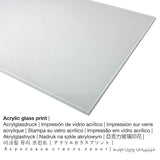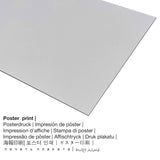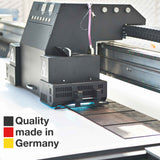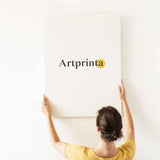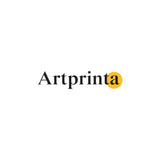Hans Memling, 1490 - Nwa agbọghọ na-amaghị nwoke na nwa - mbipụta nka mara mma
Ụtụ gụnyere. Mbupu gbakọrọ na ndenye ọpụpụ.
Nchịkọta nke oyiri
Ihe karịrị 530 Ihe osise dị afọ bụ ndị mere nwoke Dutch artist Hans memling na 1490. The 530 year-old work of art measures the size of N'ozuzu 14 1/8 x 10 1/4 na (35,9 x 26 cm); elu agba 13 3/8 x 9 1/2 inch (34 x 24,1 cm) na e mere ya mmanụ n'elu osisi. Taa, a na-ahụ ihe osise a n'ime Ụlọ ihe ngosi nka nke Metropolitan nchịkọta dijitalụ, nke bụ otu n'ime ụlọ ngosi ihe ngosi nka kachasị ukwuu na nke kachasị mma n'ụwa, nke gụnyere ihe karịrị nde abụọ ọrụ nka na-agbatị puku afọ ise nke omenala ụwa, site na prehistory ruo ugbu a na site na akụkụ ọ bụla nke ụwa .. Site n'ikike nke: Ụlọ ihe ngosi nka nke Metropolitan, New York, mkpokọta Friedsam, Arịrịọ nke Michael Friedsam, 1931 (ikikere: ngalaba ọha). Ihe kredit nke artpiece bụ: Nchịkọta Friedsam, Arịrịọ nke Michael Friedsam, 1931. N'elu nke ahụ, nhazi bụ Eserese with an image ratio of 3 : 4, meaning that the length is 25% shorter than the width. Hans Memling was a Netherlandish, whose artistic style can mainly be assigned to Northern Renaissance. The Dutch painter lived for 64 afọ, born in the year 1430 in Seligenstadt, Hessen state, Germany and died in the year 1494.
Nhọrọ ihe
N'ime ndetu ndetu ngwaahịa ị nwere ike họrọ nha na akụrụngwa nke gị. Anyị na-ahapụ gị ka ịhọrọ n'ime ụdị ndị a:
- Mbipụta nke aluminom: Aluminium Dibond prints are prints on metal with an impressive depth, which creates a fashionable impression throuch a surface structure, which is not reflective. A direct Direct Print on Aluminum Dibond is the best start to fine art prints on aluminum. The bright & white parts of the artpiece shine with a silk gloss but without glow.
- Mpempe akwụkwọ ederede (akwa akwa akwa): The Artprinta poster print is a UV printed sheet of canvas with a slightly rough surface finish. It is excellently qualified for putting your art replica in a special frame. Please bear in mind, that depending on the size of the poster we add a white margin of something between 2-6 cm round about the print motif in order to facilitate the framing with a custom frame.
- Kwaaji: A canvas print, not to be mistaken with a canvas painting, is a digital copy printed onto canvas fabric. A canvas print of this work of art will allow you to transform your art print into a large collection piece. A canvas print has the advantage of being relatively low in weight. This means, it is easy and straightforward to hang up your Canvas print without any wall-mounts. A canvas print is suitable for any kind of wall.
- Glass acrylic e biri ebi (nwere ezigbo mkpuchi iko): The acrylic glass print, often named a UV print on plexiglass, transforms the original into beautiful décor. The major upside of an acrylic glass art print is that contrasts as well as image details become identifiable due to the delicate tonal gradation. The acrylic glass protects your chosen fine art print against light and external influences for up to six decades.
Ozi dị mkpa: We try everything to describe the products as clearly as possible and to illustrate them visually on the different product detail pages. Still, the pigments of the print materials, as well as the print result might diverge marginally from the image on your monitor. Depending on your settings of your screen and the nature of the surface, color pigments can unfortunately not be printed as exactly as the digital version on this website. Bearing in mind that all the art reproductions are printed and processed by hand, there may as well be minor deviations in the motif's exact position and the size.
Ozi ngwaahịa ahaziri
| Bipụta ụdị ngwaahịa: | ọmarịcha nka |
| Usoro mmeghari: | dijitalụ mmeputakwa |
| Usoro mmepụta: | UV kpọmkwem obibi |
| Ihe ngosi: | arụpụtara na Germany |
| Stockdị ngwaahịa: | mmepụta ihe na-achọ |
| Ojiji ngwaahịa: | ụlọ mmepụta ihe nka, gallery mgbidi |
| Ndepụta: | nhazi ihe osise |
| Ụdị anya: | 3: 4 ogologo ruo obosara |
| Nkọwa: | ogologo bụ 25% mkpụmkpụ karịa obosara |
| Materials: | Mpempe akwụkwọ, akwụkwọ mmado (akwụkwọ kwaaji), mbipụta ọla (aluminium dibond), mbipụta iko acrylic (nwere ezigbo mkpuchi iko) |
| Mbipụta kanvas (akwa akwa na etiti ihe ndọtị): | 30x40cm - 12x16", 60x80cm - 24x31", 90x120cm - 35x47", 120x160cm - 47x63" |
| Mbipụta iko acrylic (nwere ezigbo mkpuchi iko) dị iche iche: | 30x40cm - 12x16", 60x80cm - 24x31", 90x120cm - 35x47", 120x160cm - 47x63" |
| Nhọrọ nha nke akwụkwọ mmado (akwụkwọ kwaaji): | 30x40cm - 12x16", 60x80cm - 24x31", 90x120cm - 35x47" |
| Mbipụta nke aluminom (ihe aluminom): | 30x40cm - 12x16", 60x80cm - 24x31", 90x120cm - 35x47" |
| Nhazi nke nnomi nka: | na-enweghị etiti |
Ozi ndabere gbasara ọrụ nka
| Aha nka nka: | "Vergin na Nwa" |
| Nhazi nka: | sere |
| Okwu mkpokọta: | nka ochie |
| Nhazi oge: | 15th narị afọ |
| Emepụtara na: | 1490 |
| Afọ nka: | ihe karịrị afọ 530 |
| Usoro izizi: | mmanụ n'elu osisi |
| Akụkụ izizi nka: | N'ozuzu 14 1/8 x 10 1/4 na (35,9 x 26 cm); elu agba 13 3/8 x 9 1/2 inch (34 x 24,1 cm) |
| Ụlọ ihe ngosi nka / ebe: | Museumlọ ihe ngosi nka nke Obodo |
| Ebe ngosi nka: | New York City, New York, Njikota Obodo Amerika |
| website: | Museumlọ ihe ngosi nka nke Obodo |
| Ikikere nke ihe osise: | ngalaba ọha |
| Site n'aka: | Ụlọ ihe ngosi nka nke Metropolitan, New York, mkpokọta Friedsam, Arịrịọ nke Michael Friedsam, 1931 |
| Ebe kredit nke ọrụ nka: | Nchịkọta Friedsam, Arịrịọ nke Michael Friedsam, 1931 |
Tebụl nchịkọta ihe nkiri
| Ihe nkiri: | Hans memling |
| A makwaara dịka: | Memling Khans, Mamline Hans, Memling, Zuan Memeglino, Emmelinkx, Hemelink, Memlinc Hans, Hemelinck Hans, Hemmeling Hans, Hammelmik, Memmelynghe Jan van, Hans Hemmelinck, Hemling Hans, Memmelinck Hans, Jean Hemelinck, Hemmelinck, Hans van Brugge, Jean Hemmelink, Jan van Mimnelinghe, Memling Hans, Heymelinck, Membling, Hans Memlinc, Himmelinck, Hemeling, Hans Hémelink, Hans Memmelinck of Bruges, hemling hans, Emelinck, Emmelinck, Hans Memling, John of Bruges, Jean Emmelinck, Hamelinck, Memlinc Jan, memling h. |
| okike onye nka: | nwoke |
| Obodo onye nka: | Dutch |
| Ọrụ: | Asụsụ Netherlands |
| Obodo obibi: | mba netherland |
| nhazi ọkwa: | nna ukwu ochie |
| styles: | Northern Renaissance |
| Ndụ: | 64 afọ |
| Amụrụ n'afọ: | 1430 |
| Obodo: | Seligenstadt, Hessen State, Germany |
| Afọ nwụrụ: | 1494 |
| Nwụrụ na (ebe): | Bruges, West-Vlaanderen, Flanders, Belgium |
© Nwebiisinka nke - Artprinta (www.artprinta.com)
What does the original artwork description of the The Metropolitan Museum of Art write about this work of art created by Hans Memling? (© Nwebiisinka - The Metropolitan Museum of Art - Museumlọ ihe ngosi nka nke Obodo)
This painting of the Virgin and Child formed what would have been a diptych with a portrait of a donor, possibly presented by his or her patron saint, on the accompanying panel at the right. Dendrochronology established that wood from the same tree was used for this painting's support as well as Memling's Bathsheba at her Bath (ca. 1485, Staatsgalerie Stuttgart), reinforcing the connection between The Met's picture and Memling's workshop.

